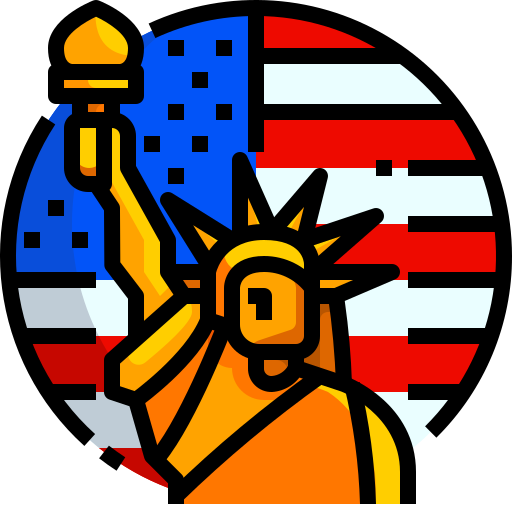- Mar 23, 2024
- 160
- 83
Similarities between the Indo-Aryan and Iranian peoples in ancient Sindhu (Indus) and Parsa (Persia) are quite interesting. Both had a common ancestor, both worshiped similar gods, both had similar cultures and both spoke a similar language. Evidence for the cultural and religious similarities can be found in the Rig Veda, a sacred text written in Vedic Sanskrit by the Indo-Aryans in Punjab (Saptha Sindhu) in around 1500 BCE, and in the Zend Avesta, a sacred text written in Avestan Persian by the Iranians during the same period. So great is the amount of material common to the Vedic Indo-Aryans and the Avestan Iranians, that both texts show common geographic names, deities and ideas.
> Texts
Indo-Aryans wrote the Rig Veda, while the Iranians wrote the Zend Avesta. Both texts share a similar ideology of light versus dark, day versus night and order versus deceit. In both texts, elements of nature are worshiped in personified forms and idolatry is strictly forbidden. The common deities, either by name or by characteristics, include:
*Vedic Mitra and Avestan Mithra (also Graeco Mithras)
*Vedic Varuna and Avestan Ahuramazda
*Vedic Indra and Avestan Verethra
*Vedic Sorya and Avestan Hvarxsaeta
*Vedic Agni or Matarisvan and Avestan Atar (also Graeco Ignis)
>Languages
Indo-Aryans wrote and spoke Vedic Sanskrit, while the Iranians wrote and spoke Avestan Persian. The similarities between both languages are quite interesting, as both had come from a common ancestral Indo-European language. One famous similarity is how any “S” sounding word in Vedic Sanskrit was subsequently pronounced with an “H” sound in Avestan Persian. Thus, Sindhu in Vedic Sanskrit was pronounced “Hindhu” in Avestan Persian. This is an important note to take, as originally the term Hindhu was meant to represent a geographical location, rather than a faith. Other examples include:
*Vedic Hiranya and Avestan Zaranya (Gold)
*Vedic Seyna and Avestan Hayna (Army)
*Vedic Rsti and Avestan Arsti (Spear)
*Vedic Ksatra and Avestan Xsatra (Sovereignty)
*Vedic Asura and Avestan Ahura (Lord)
*Vedic Yajna and Avestan Yasna (Sacrifice)
*Vedic Hotar and Avestan Zaotar (Sacrificing Priest)
*Vedic Soma and Avestan Haoma (Sacrificing Drink)
*Vedic Aryaman and Avestan Airyaman (Member of Religious Community)
>Social Structure
Indo-Aryans and Iranians shared a similar social structure as well. Neither society was divided on the basis of labour or wealth but rather by tribe and lineage. Joel Brereton, a professor of Sanskrit and Religious studies, writes: “there is no evidence in the Vedas for an elaborate, much-subdivided and overarching caste system” and similarly none is found in the Avesta as well. Initially, both the Indo-Aryans and Iranians were nomadic pastoralists with their economic life centered on herding cows, horses and camels – thus wealth was judged on the basis of the size of herds. Eventually, both groups began settling in fertile valleys and gradually shifted more towards agriculture – this was also accelerated due to the height of the Iron Age by this period and the development of iron tools like axes and ploughs. The Indo-Aryans lived in villages of related families, which together formed a clan, and several clans a tribe, and at the head of which was the king. The king’s authority depended on his personal prowess and initiative, and was limited by the council of nobles, and in some tribes by the freemen The Iranians also lived in villages, which together formed a tribe, a several tribes a nation, and the head of which was a king as well.
> Ideology
Both the Indo-Aryans and Iranians describe their respective societies as ambitious and steadfast who were fond of war, drinking spirits, chariot racing, and gambling. In both societies, their gods of war were considered the ideal warriors to look up to

> Texts
Indo-Aryans wrote the Rig Veda, while the Iranians wrote the Zend Avesta. Both texts share a similar ideology of light versus dark, day versus night and order versus deceit. In both texts, elements of nature are worshiped in personified forms and idolatry is strictly forbidden. The common deities, either by name or by characteristics, include:
*Vedic Mitra and Avestan Mithra (also Graeco Mithras)
*Vedic Varuna and Avestan Ahuramazda
*Vedic Indra and Avestan Verethra
*Vedic Sorya and Avestan Hvarxsaeta
*Vedic Agni or Matarisvan and Avestan Atar (also Graeco Ignis)
>Languages
Indo-Aryans wrote and spoke Vedic Sanskrit, while the Iranians wrote and spoke Avestan Persian. The similarities between both languages are quite interesting, as both had come from a common ancestral Indo-European language. One famous similarity is how any “S” sounding word in Vedic Sanskrit was subsequently pronounced with an “H” sound in Avestan Persian. Thus, Sindhu in Vedic Sanskrit was pronounced “Hindhu” in Avestan Persian. This is an important note to take, as originally the term Hindhu was meant to represent a geographical location, rather than a faith. Other examples include:
*Vedic Hiranya and Avestan Zaranya (Gold)
*Vedic Seyna and Avestan Hayna (Army)
*Vedic Rsti and Avestan Arsti (Spear)
*Vedic Ksatra and Avestan Xsatra (Sovereignty)
*Vedic Asura and Avestan Ahura (Lord)
*Vedic Yajna and Avestan Yasna (Sacrifice)
*Vedic Hotar and Avestan Zaotar (Sacrificing Priest)
*Vedic Soma and Avestan Haoma (Sacrificing Drink)
*Vedic Aryaman and Avestan Airyaman (Member of Religious Community)
>Social Structure
Indo-Aryans and Iranians shared a similar social structure as well. Neither society was divided on the basis of labour or wealth but rather by tribe and lineage. Joel Brereton, a professor of Sanskrit and Religious studies, writes: “there is no evidence in the Vedas for an elaborate, much-subdivided and overarching caste system” and similarly none is found in the Avesta as well. Initially, both the Indo-Aryans and Iranians were nomadic pastoralists with their economic life centered on herding cows, horses and camels – thus wealth was judged on the basis of the size of herds. Eventually, both groups began settling in fertile valleys and gradually shifted more towards agriculture – this was also accelerated due to the height of the Iron Age by this period and the development of iron tools like axes and ploughs. The Indo-Aryans lived in villages of related families, which together formed a clan, and several clans a tribe, and at the head of which was the king. The king’s authority depended on his personal prowess and initiative, and was limited by the council of nobles, and in some tribes by the freemen The Iranians also lived in villages, which together formed a tribe, a several tribes a nation, and the head of which was a king as well.
> Ideology
Both the Indo-Aryans and Iranians describe their respective societies as ambitious and steadfast who were fond of war, drinking spirits, chariot racing, and gambling. In both societies, their gods of war were considered the ideal warriors to look up to
Source: https://www.PKDefense.com




